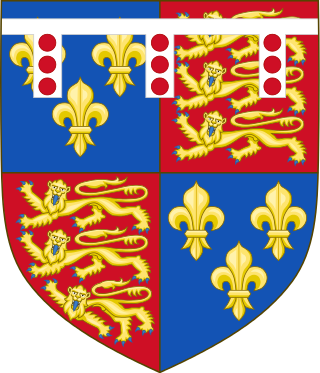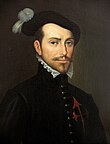
The House of Tudor was an English and Welsh dynasty that held the throne of England from 1485 to 1603. They descended from the Tudors of Penmynydd, a Welsh noble family, and Catherine of Valois. The Tudor monarchs ruled the Kingdom of England and the Lordship of Ireland for 118 years with five monarchs: Henry VII, Henry VIII, Edward VI, Mary I and Elizabeth I. The Tudors succeeded the House of Plantagenet as rulers of the Kingdom of England, and were succeeded by the Scottish House of Stuart. The first Tudor monarch, Henry VII, descended through his mother from the House of Beaufort, a legitimised branch of the English royal House of Lancaster, a cadet house of the Plantagenets. The Tudor family rose to power and started the Tudor period in the wake of the Wars of the Roses (1455–1487), which left the main House of Lancaster extinct in the male line.

The 1490s decade ran from January 1, 1490, to December 31, 1499.
The 1460s decade ran from January 1, 1460, to December 31, 1469.
The 1470s decade ran from January 1, 1470, to December 31, 1479.
The 1480s decade ran from January 1, 1480, to December 31, 1489.
The 1450s decade ran from January 1, 1450, to December 31, 1459.

Year 1487 (MCDLXXXVII) was a common year starting on Monday of the Julian calendar.
Year 1496 (MCDXCVI) was a leap year starting on Friday of the Julian calendar.
Year 1490 (MCDXC) was a common year starting on Friday of the Julian calendar.
Year 1486 (MCDLXXXVI) was a common year starting on Sunday.

Year 1470 (MCDLXX) was a common year starting on Monday of the Julian calendar.
Year 1460 (MCDLX) was a leap year starting on Tuesday of the Julian calendar, the 1460th year of the Common Era (CE) and Anno Domini (AD) designations, the 460th year of the 2nd millennium, the 60th year of the 15th century, and the 1st year of the 1460s decade.
Year 1452 (MCDLII) was a leap year starting on Saturday of the Julian calendar.

The House of York was a cadet branch of the English royal House of Plantagenet. Three of its members became kings of England in the late 15th century. The House of York descended in the male line from Edmund of Langley, 1st Duke of York, the fourth surviving son of Edward III. In time, it also represented Edward III's senior line, when an heir of York married the heiress-descendant of Lionel, Duke of Clarence, Edward III's second surviving son. It is based on these descents that they claimed the English crown. Compared with its rival, the House of Lancaster, it had a superior claim to the throne of England according to cognatic primogeniture, but an inferior claim according to agnatic primogeniture. The reign of this dynasty ended with the death of Richard III of England at the Battle of Bosworth Field in 1485. It became extinct in the male line with the death of Edward Plantagenet, 17th Earl of Warwick, in 1499.

John Tiptoft, 1st Earl of Worcester KG, was an English nobleman and scholar who served as Lord High Treasurer, Lord High Constable of England and Lord Deputy of Ireland. He was known as "the Butcher of England" to his Tudor detractors.
Events from the 1450s in England.
Events from the 1480s in England. This decade marks the beginning of the Tudor period.
This article is about the particular significance of the century 1401–1500 to Wales and its people.
Events from the 1520s in England.

The Duchy of Münsterberg or Duchy of Ziębice was one of the Duchies of Silesia, with a capital in Münsterberg (Ziębice). Existing from 1321/1322 to 1742, it was located in what came to be referred to as Lower Silesia. Its territory is similar to modern Ząbkowice Śląskie County in Poland.







